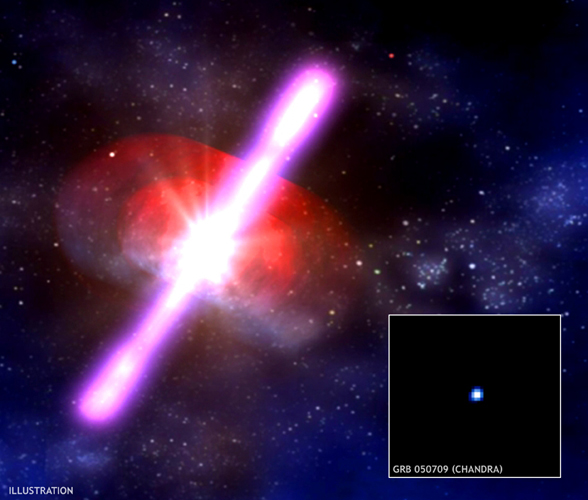GRB 050709: A gamma-ray burst located in a spiral galaxy 2 billion light years from Earth.
Caption: The artist's rendering (left) of GRB 050709 depicts a gamma-ray burst that was discovered on 9 July, 2005 by NASA's High-Energy Transient Explorer. The burst radiated an enormous amount of energy in gamma-rays for half a second, then faded away. Three days later, Chandra's detection of the X-ray afterglow (inset) established its position with high accuracy. A Hubble Space Telescope image showed that the burst occurred in the outskirts of a spiral galaxy. This location is outside the star-forming regions of the galaxy and evidence that the burst was not produced by the explosion of an extremely massive star. The most likely explanation for the burst is that it was produced by a collision of two neutron stars, or a neutron star and a black hole.
Scale: Inset X-ray image is 46 arcsec across
Chandra X-ray Observatory ACIS Image
|


